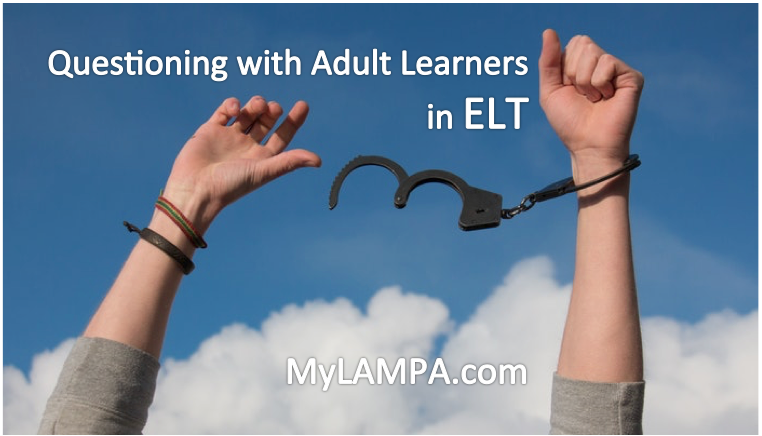Teaching Profanity to Foreign Language Learners

How the heck do I teach profanity without offending or embarrassing anyone and… should I even go there?
It would be a mistake to be flippant when deciding whether and how to teach vulgar, irreverent or harsh language in a TEFL context. There can be important dynamics connected with the class’s make-up, culture, learners’ age, religion, gender, societal norms and the teacher’s own knowledge and comfort level. And then, even if we do decide to go ahead with it, there are other very important issues arising from affective aspects of the target language such as native-like intonation and the “feel” of the word or phrase. How strong is the language or can it be? In which situations is it (in)appropriate? Is there a softer substitute? Do learners need to understand what they are saying? And so on…
Before I go further, I should explain that my own teaching has been limited to a European context in a country whose inhabitants are not known for being particularly religiously devout. And having lived there for quite some time, played football and frequented many a pub, I think I can say that I am fairly well versed in local informal expressions of angst and astonishment. This gives me an insight that a foreign language teacher who has not had the benefit of learning a second language outside of the classroom may not have. Rest assured that profanity in your students’ mother tongue will not necessarily translate well to your own. Just like working with any other abstract or emotion-centred vocabulary, profanity usually cannot be translated word for word and there are often subtleties that can only be felt.
Of course, the reason I am addressing foreign language teachers, as opposed to second language teachers, is that the decision to introduce profanity is much more straightforward in a group where learners all share the same culture. This may also be the reason why international textbook publishers tend not to include colourful language. Simply put, it is not appropriate to teach language that would offend or make learners feel uncomfortable. When we cannot anticipate how profanity will be received due to our unfamiliarity with the learners or their culture, we ought to avoid it unless we are asked to teach it.
If we decide to teach profanity, I think that it is important to begin with a disclaimer. That is, it is important that learners understand what people are speaking about, but it is not advisable for them to use colourful language liberally. Gaffes in intonation, word choice, context or propriety may make utterances much more offensive than they are intended.
Finally, although I have done lessons focussed solely on profanity at the request of learners, I think that there are better ways to introduce new language. In my own experience, when it is appropriate and after the disclaimer has been made, strong language can be effectively introduced along with standard language. In many cases, there are also softened equivalents for colourful vocabulary that can be taught at the same time. For example, interjections such as geez, heck, frig or shoot are commonly used without the same sacrilegious or vulgar stigma that their profane counterparts have. Teaching colourful language along with formal expressions, informal expressions, slang and/or idioms seems to work well. This can contextualize the utterances and give learners a sense of the strength of the phrases in relation to one another.
As an example, I am including a simple activity that I have used with adult learners on the theme of expressing frustration. I use this as a follow-on to teaching wish when speaking about undesirable behaviour, e.g. “I wish people wouldn’t park like that!”
Sample activity: I wish they wouldn’t…
- Write phrases that we use to express frustration and annoyance down the left side of the board in order of softest to hardest. Use one asterisk to denote a slang phrase and two to denote more vulgar phrases. These may include the following: It bothers me when…, It *bugs me when, It gets on my nerves when…, It annoys me when…, It drives me crazy/mad when…, I hate it when…, It *ticks me off when…, It **pisses me off when…
- Explain that the phrasal verb, “to piss somebody off” is a harsh phrase and that learners shouldn’t use it liberally in the company of strangers but it is important to understand. Also clear up any other unknown vocabulary.
- Write, “I wish people would/wouldn’t…” in the centre of the right side of the board.
- Introduce a theme. I like to use, “Things that annoy me when I’m driving”, but if you know the learners well enough, “Family and friends” could be another good alternative. There are many themes that would work well.
- Tell learners that we are going have a semi-structured discussion where everyone will first say what behaviours annoy them (the left side of the board) and then what they wish people would do differently (the right side). They may come up with examples such as, “It really gets on my nerves when people take up two spaces when they park. I wish they would be more considerate!”
- Facilitate the discussion guiding usage and contributing new vocabulary where appropriate. If the group is large, do this in small groups so that everyone has a chance to make several contributions.
- Debrief.




